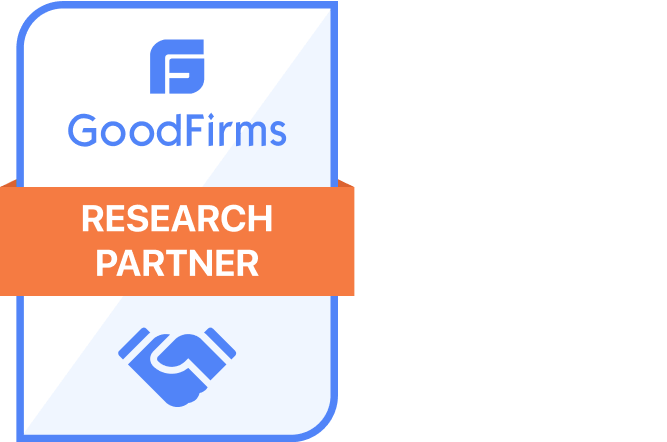Martech integration is at the heart of how modern businesses build meaningful connections with their customers. As the world of marketing technology continues to grow and evolve, it’s no longer just about exploring the latest tools. It’s actually about making them work together in a way that drives real impact. Navigating this Martech integration landscape means understanding what tools exist—and how to connect them effectively for better results.

The Martech Integrations Are Redefining the Way Marketers Engage With Their Audience.
From CRM tools to automation platforms, Martech integration is transforming how businesses manage data and personalize user experiences. Email tools further enhance communication strategies, and their seamless integration with WordPress showcases just how far digital marketing has evolved.
CRM Systems Integration With WordPress
Martech integration with CRM systems helps businesses manage customer interactions and sales processes more efficiently at any scale. WordPress, as a popular content management system (CMS), is widely used to build and manage websites, including e-commerce stores. Integrating CRM systems with WordPress can provide several key benefits for businesses:
Streamlined Lead Capture and Management
By integrating CRM systems with WordPress, businesses can seamlessly capture leads directly from their WordPress forms. This eliminates manual data entry, ensuring leads are added to the CRM and their interactions are tracked accurately. This streamlined process simplifies lead management and enables sales teams to focus on nurturing leads and closing deals.
Enhanced Customer Data Analysis
Martech integration combines CRM and WordPress user data, giving businesses deeper insight into customer behavior and preferences. This holistic view of customer data allows businesses to identify trends, segment customers into targeted groups, and personalize marketing campaigns. This data-driven approach can lead to more effective customer engagement and improved conversion rates.
Improved Customer Relationships
By integrating CRM systems with WordPress, businesses can provide a seamless customer experience across all touchpoints. For instance, when a customer visits a WordPress website, their previous interactions with the business can be pulled from the CRM and displayed on the website. This personalized experience demonstrates that the business values customer relationships and understands their unique needs.
Automation of Sales and Marketing Processes
Martech integration with CRM and WordPress helps automate repetitive tasks, allowing teams to focus more on customer engagement and conversions. Moreover, this automation reduces manual effort and significantly increases efficiency across both sales and marketing activities. As a result, employees have more time to concentrate on high-value tasks, such as building relationships and closing deals.
Unified Customer View
When CRM data is integrated with WordPress, businesses gain a unified view of their customers across all channels. As a result, this comprehensive perspective helps companies understand each customer’s journey. Consequently, they can tailor marketing and sales strategies more effectively.

Examples of WordPress Plugins for CRM Integration
Several WordPress plugins are available to facilitate integration with popular CRM systems like Salesforce, HubSpot, and Pipedrive. These plugins allow for seamless data exchange between WordPress and the CRM, enabling businesses to leverage the benefits of both systems.
- HubSpot CRM for WordPress: This plugin integrates HubSpot CRM with WordPress, enabling businesses to capture leads from forms, track website visits, and manage customer data directly within WordPress.
- Zapier for WordPress: Zapier is a popular automation platform that connects various web applications. With Zapier, you can create automated workflows that transfer data between WordPress and your CRM, such as automatically updating CRM records when a new lead is submitted through a WordPress form.
- Salesforce for WordPress: This plugin integrates Salesforce CRM with WordPress, allowing businesses to create and manage Salesforce leads, opportunities, and contacts directly from within their WordPress dashboard.
Integrating CRM systems with WordPress can significantly enhance a business’s ability to manage customer interactions, analyze customer data, and personalize marketing campaigns. This integration streamlines lead capture, provides a more comprehensive view of customer data, and automates sales and marketing processes. By leveraging the power of CRM technology and the flexibility of WordPress, businesses can strengthen customer relationships, improve sales conversions, and achieve their marketing goals more effectively.
Marketing Automation Platforms Integration with WordPress
MAPs (Marketing Automation Platforms) are powerful tools that enable businesses to automate marketing tasks, personalize customer experiences, and track marketing ROI. Additionally, they make it easier to track marketing ROI. WordPress, as a flexible content management system (CMS), is widely used to build and manage websites, including online stores. When combined, Martech integration between MAPs and WordPress offers several key benefits for businesses.:
Personalized Customer Experiences
By integrating MAPs with WordPress, marketers can create personalized customer journeys based on interactions with the website. This means that each customer will receive marketing messages that are tailored to their specific interests and needs. For example, a visitor who spends a significant amount of time browsing product pages on a WordPress e-commerce store might receive email recommendations for related products.
Simplified Marketing Automation
MAP integration with WordPress streamlines the creation and management of marketing automation campaigns. For example, businesses can connect WordPress actions—like form submissions, page visits, and product purchases—to MAP triggers, such as email sends or redirects. As a result, this automation reduces manual effort and improves workflow efficiency. Moreover, it allows marketers to focus on strategic tasks, like creating content and nurturing customer relationships.
Enhanced Lead Nurturing
MAP integration with WordPress allows businesses to effectively nurture leads through the sales funnel. As leads interact with the WordPress website, their data is captured and passed to the MAP. The MAP then uses this data to segment leads into targeted groups and send personalized email campaigns that are designed to move leads closer to a sale.
Improved Marketing ROI
MAP integration with WordPress enables businesses to track the performance of their marketing campaigns and measure their return on investment (ROI). By analyzing data from WordPress and the MAP, businesses can identify which campaigns are most effective and make data-driven decisions to improve their marketing efforts.

Examples of WordPress Plugins for MAP Integration
Several WordPress plugins support MAP integration with tools like Marketo, Adobe Experience Cloud, and Pardot. These plugins enable seamless data exchange between MAPs and WordPress, allowing businesses to use both systems effectively.
- Marketo Engage for WordPress: This plugin integrates Marketo Engage with WordPress enabling businesses to create and manage personalized email campaigns, track lead activity, and measure marketing ROI directly within WordPress.
- Adobe Experience Cloud for WordPress: This plugin integrates Adobe Experience Cloud with WordPress, allowing businesses to create personalized landing pages, track website traffic, and deliver targeted marketing messages directly from their WordPress dashboard.
- Pardot for WordPress: This plugin integrates Pardot with WordPress, enabling businesses to capture leads from WordPress forms, track website interactions, and nurture leads through the sales funnel directly within WordPress.
As a result, MAP integration with WordPress provides powerful tools to personalize experiences, automate tasks, and boost marketing ROI. Moreover, by leveraging both systems, businesses can nurture leads, improve conversions, and reach marketing goals more effectively.
Email Marketing Tools Integration with WordPress
Email marketing tools are essential for businesses of all sizes to reach target audiences and promote their services. Moreover, WordPress is a widely used CMS for building and managing websites, including online stores. When integrated, email marketing tools and WordPress offer several key benefits that help streamline communication and increase effectiveness.
Streamlined Email Subscription Processes
Martech integration helps businesses create seamless subscription processes using email tools and WordPress. Visitors can easily sign up for newsletters or updates. Integration enables opt-in forms to be embedded directly into WordPress pages and posts. This one-click subscription process boosts sign-ups and expands your marketing reach. A simple, streamlined setup increases your chances of growing your email list effectively.
Automated Email Sequencing
Martech integration allows businesses to automate email sequences based on user actions on the website. When visitors subscribe, download resources, or make a purchase, automated email series can start. These emails are personalized and timely, improving customer engagement. Automation saves marketers time and ensures users receive relevant content. With effective Martech integration, businesses can build stronger connections and boost communication without manual effort.
Enhanced Email Marketing Effectiveness
Integrating email marketing tools with WordPress helps businesses track campaign performance and boost results. Additionally, WordPress dashboards offer analytics and reporting features to monitor open rates, clicks, and conversions. This way, businesses can understand what works and what needs improvement. As a result, they can refine email strategies and increase engagement and conversions.

Examples of WordPress Plugins for Email Marketing Integration
Several WordPress plugins support Martech integration with popular email marketing tools like ActiveCampaign, MailChimp, and Constant Contact.
These plugins enable seamless data exchange between WordPress and your email platform. Businesses can easily embed opt-in forms, manage email lists, and track campaign performance—all from the WordPress dashboard.
- ActiveCampaign for WordPress: integrates WordPress with ActiveCampaign. It lets businesses create campaigns, automate email sequences, and track open and click rates directly.
- MailChimp for WordPress: allows businesses to add opt-in forms, manage subscribers, and monitor performance, all within the WordPress dashboard.
- Constant Contact for WordPress: helps create campaigns, automate emails, and track open and click-through rates from the WordPress backend.
Integrating email marketing tools with WordPress offers businesses a powerful Martech integration stack. It streamlines subscriptions, automates campaigns, and delivers valuable insights.
By combining both systems, businesses can engage their audience more effectively, increase conversions, and reach marketing goals with greater efficiency.
Analytics Tools Integration with WordPress
Analytics tools are essential for businesses to gain insights into website traffic, user behavior, and campaign performance. WordPress, as a widely used content management system (CMS), provides a platform for integrating various analytics tools. Integrating analytics tools with WordPress can provide several key benefits for businesses:
Detailed User Behavior Tracking
By integrating analytics tools with WordPress, businesses can track user behavior across the site in a granular manner, including page views, bounce rate, session duration, and conversion metrics. This detailed tracking provides valuable insights into user preferences, interests, and how they interact with the website.
Content Effectiveness Evaluation
Analytics tools can help businesses assess the effectiveness of their content and identify which content pieces are most engaging and generate the most traffic. This information can be used to refine content strategies, prioritize content creation, and optimize content for better performance.
Conversion Path Analysis
Analytics tools can track user journeys through the website, revealing the steps they take before converting, such as making a purchase or subscribing to a newsletter. This understanding of conversion paths can help businesses identify bottlenecks, improve navigation, and optimize the conversion process for better results.
Data-Driven Website Optimization
By analyzing analytics data, businesses can identify areas for improvement on their websites, such as site speed, usability, and user experience. This data-driven approach helps businesses make informed decisions to optimize their websites for better user engagement and conversions.
Campaign Performance Measurement
Analytics tools can track the performance of marketing campaigns, such as email campaigns, social media ads, and paid search campaigns. By measuring metrics like click-through rates, conversion rates, and cost-per-acquisition, businesses can evaluate the effectiveness of their campaigns and make adjustments to improve their return on investment (ROI).

Examples of WordPress Plugins for Analytics Integration
Several WordPress plugins are available to facilitate integration with popular analytics tools like Google Analytics, Matomo (Piwik), and Crazy Egg. These plugins allow for seamless data exchange between WordPress and the analytics tool, enabling businesses to easily track website traffic, user behavior, and campaign performance directly from within their WordPress dashboard.
- Google Analytics for WordPress: This plugin integrates Google Analytics with WordPress, allowing businesses to set up analytics tracking, view reports, and manage their Google Analytics account directly from their WordPress dashboard.
- Matomo (Piwik) for WordPress: This plugin integrates Matomo (Piwik) with WordPress, allowing businesses to track website traffic, user behavior, create custom reports, and anonymize user data directly from their WordPress dashboard.
- Crazy Egg for WordPress: This plugin integrates Crazy Egg with WordPress, allowing businesses to create heatmaps, scroll maps, and user recordings to visualize user behavior on their website directly from their WordPress dashboard.
Integrating analytics tools with WordPress provides businesses with valuable insights into website traffic, user behavior, campaign performance, and content effectiveness. By leveraging the capabilities of both systems, businesses can make data-driven decisions to optimize their websites, create effective content, and run successful marketing campaigns.
Conversion Rate Optimization (CRO) Tools Integration with WordPress
CRO (Conversion Rate Optimization) tools are essential for businesses to identify and eliminate website friction that hinders conversion. WordPress, as a widely used content management system (CMS), provides a platform for integrating various CRO tools. Integrating CRO tools with WordPress can provide several key benefits for businesses:
Precise Conversion Tracking
CRO tools can track conversions from various sources, including forms, phone calls, chats, and social media interactions. This granular tracking provides businesses with accurate data about which marketing efforts are generating leads and sales.
A/B Testing and Optimization
CRO tools enable businesses to conduct A/B tests to compare different versions of website pages, content, and forms. This testing allows businesses to identify the most effective elements and optimize websites for higher conversions.
User Behavior Analysis
CRO tools can analyze user behavior on the website, identifying patterns, trends, and areas for improvement. This analysis can help businesses understand why users are converting or not and make targeted changes to improve the conversion process.
Real-time Data Insights
CRO tools provide businesses with real-time data insights into website performance, conversion rates, and user behavior. This immediate access to data empowers businesses to make informed decisions and take corrective actions quickly.
Improved User Experience
By identifying and eliminating website friction, CRO tools can significantly improve the user experience. This enhanced experience leads to increased user engagement, satisfaction, and ultimately, higher conversion rates.

Examples of WordPress Plugins for CRO Integration
Several WordPress plugins are available to facilitate integration with popular CRO tools like Google Optimize, Crazy Egg, and Hotjar. These plugins allow for seamless data exchange between WordPress and the CRO tool, enabling businesses to easily track conversions, analyze user behavior, and conduct A/B tests directly from within their WordPress dashboard.
- Optimizely: This platform seamlessly integrates with WordPress, empowering businesses to conduct A/B testing, multivariate testing, personalization, and feature flagging directly from their WordPress dashboard.
- Crazy Egg: This plugin integrates Crazy Egg with WordPress, allowing businesses to view heatmaps, scroll maps, user recordings, and conversion funnels directly from their WordPress dashboard.
- Hotjar: This plugin integrates Hotjar with WordPress, allowing businesses to analyze user behavior, create heatmaps, recordings, and feedback polls directly from their WordPress dashboard.
Integrating CRO tools with WordPress provides businesses with the power to identify and eliminate conversion roadblocks, optimize website elements, and improve the user experience. This data-driven approach leads to increased conversions, improved customer satisfaction, and higher ROI.
Chatbot and Customer Engagement Tools Integration with WordPress
Chatbots and customer engagement tools are essential for businesses to provide 24/7 support, answer customer queries, and gather leads. WordPress, as a widely used content management system (CMS), provides a platform for integrating various chatbot and customer engagement tools. Integrating chatbots with WordPress can provide several key benefits for businesses:
24/7 Customer Support
Chatbots can provide 24/7 customer support, answering inquiries, resolving issues, and providing assistance to customers at any time of day or night. This round-the-clock availability can significantly improve customer satisfaction and reduce the workload on human customer support agents.
Immediate Response to Customer Inquiries
Chatbots can provide immediate responses to customer inquiries, even when businesses are closed or experiencing high volumes of traffic. This quick response time can keep customers engaged and satisfied, and it can also prevent them from abandoning their inquiries or switching to competitors.
Lead Generation and Qualification
Chatbots can gather lead information, such as contact details, interests, and purchase intent, as customers interact with them. This information can be used to qualify leads and nurture them through the sales funnel.
Personalized Customer Experiences
Chatbots can be programmed to provide personalized responses to customers based on their past interactions, preferences, and purchase history. This personalized experience can make customers feel valued and appreciated, and it can also increase the likelihood of conversions.
Streamlined Sales Processes
Chatbots can be used to automate parts of the sales process, such as product recommendations, price quoting, and checkout. This automation can free up sales representatives to focus on more complex tasks, such as building relationships with potential customers.

Examples of WordPress Plugins for Chatbot Integration
Several WordPress plugins are available to facilitate integration with popular chatbot tools like WotNot, Drift, and Intercom. These plugins allow for seamless data exchange between WordPress and the chatbot tool, enabling businesses to easily embed chatbots on their websites, manage conversations, and track key performance indicators (KPIs) directly from within their WordPress dashboard.
- WotNot for WordPress: This plugin integrates WotNot with WordPress, allowing businesses to create and manage chatbots, track conversations, and measure KPIs directly from their WordPress dashboard.
- Drift for WordPress: This plugin integrates Drift with WordPress, enabling businesses to embed chatbots on their websites, capture lead information, and personalize customer experiences directly from their WordPress dashboard.
- Intercom for WordPress: This plugin integrates Intercom with WordPress, allowing businesses to connect with customers across multiple channels, provide support, and gather customer feedback directly from their WordPress dashboard.
Integrating chatbots and customer engagement tools with WordPress provides businesses with a powerful toolset for providing 24/7 WordPress development support, engaging with customers, and generating leads. By leveraging these tools, businesses can significantly improve customer satisfaction, conversion rates, and their overall ROI.
The Advantages of Integrating These Tools With WordPress

Unified Management
Centralizing control over various marketing tools within WordPress streamlines management and saves time. Instead of having to switch between multiple dashboards and platforms, businesses can manage all their marketing activities from a single location. This centralized approach streamlines workflows, reduces the risk of errors, and frees up time for marketers to focus on more strategic tasks.
Enhanced Personalization
Integration allows for more personalized user experiences based on their interactions with the website. By collecting data from various sources, such as CRM systems, analytics tools, and chatbot interactions, businesses can create comprehensive profiles of their customers. This data can then be used to tailor marketing messages, product recommendations, and offers to individual users. Personalization makes customers feel valued and appreciated, increases engagement, and can lead to increased conversions and sales.
Data Centralization
Collecting and analyzing data from various marketing channels in one place leads to better insights and strategy formulation. By having all their data centralized in WordPress, businesses can easily track their performance across multiple channels, identify trends, and make data-driven decisions about their marketing campaigns. This data-driven approach ensures that marketing efforts are aligned with business goals and are optimized for maximum impact.
Automated Processes
Automating repetitive tasks like lead capture, email sending, and social media posting increases efficiency. By automating these tasks, businesses can save time and resources, freeing up their employees to focus on more strategic initiatives. Automation also helps to ensure that marketing campaigns are executed consistently and that there are no missed opportunities.
Improved Customer Journey Tracking
Understanding how users interact with the website and respond to marketing efforts leads to more effective campaigns. CRM systems, analytics tools, and chatbot integrations provide a comprehensive view of the customer journey, from initial website visit to conversion and beyond. This data can be used to identify areas for improvement, such as bottlenecks in the sales funnel or ineffective marketing messages. By understanding the customer journey, businesses can tailor their strategies to address specific customer needs and preferences.
Scalability and Flexibility
As the business grows, these integrations can be scaled and adapted to meet changing needs. WordPress’s vast ecosystem of plugins and integrations means that as your marketing strategies evolve, your tools can evolve with them. This scalability ensures that businesses can adapt to new trends and technologies without having to overhaul their entire marketing infrastructure.
Cost-Effectiveness and Resource Optimization
Integrations can reduce the need for multiple disparate systems, saving the costs on software subscriptions and reducing the learning curve for staff. By centralizing functions within WordPress, resources are optimized, and efficiency is improved. This cost-effectiveness is particularly beneficial for small businesses and startups that are on a tight budget.
Enhanced Customer Engagement
Tools like chatbots and SMS/MMS integrations ensure that customer engagement is timely and relevant. This leads to improved customer satisfaction and loyalty, as interactions are more personalized and responsive to individual needs. Chatbots can provide 24/7 support, answer queries, and even complete sales processes. SMS/MMS can be used to send targeted offers, promotions, and reminders, keeping customers engaged and increasing the likelihood of repeat business.

By leveraging these integrations, businesses can create a cohesive and powerful digital marketing ecosystem within their WordPress site. This holistic approach ensures that marketing efforts are aligned, data is managed effectively, and customer engagement is maximized. As a result, businesses can achieve their marketing goals, build stronger customer relationships, and drive sustainable growth.
Martech integration has become an essential strategy for businesses seeking to streamline operations, personalize customer experiences, and achieve their business goals. However, the sheer number of available tools and the complexities of integrating them can pose a daunting challenge for marketers.
That’s where our team of experienced experts comes in. We understand the intricacies of Martech integration and can help you overcome the challenges, ensuring that you leverage the power of WordPress to transform your marketing efforts.
While the potential benefits are immense, navigating the Martech landscape can be challenging. Don’t let the challenges of Martech integration hinder your marketing growth. Let us help you navigate the complexities and unlock the full potential of your WordPress and Martech bundle.
Contact us today for a free consultation and let our WordPress consultant guide you through the process of integrating the right tools for your business.
Together, we can overcome the challenges, harness the power of WordPress, and transform your marketing operations into a powerful engine of growth.








